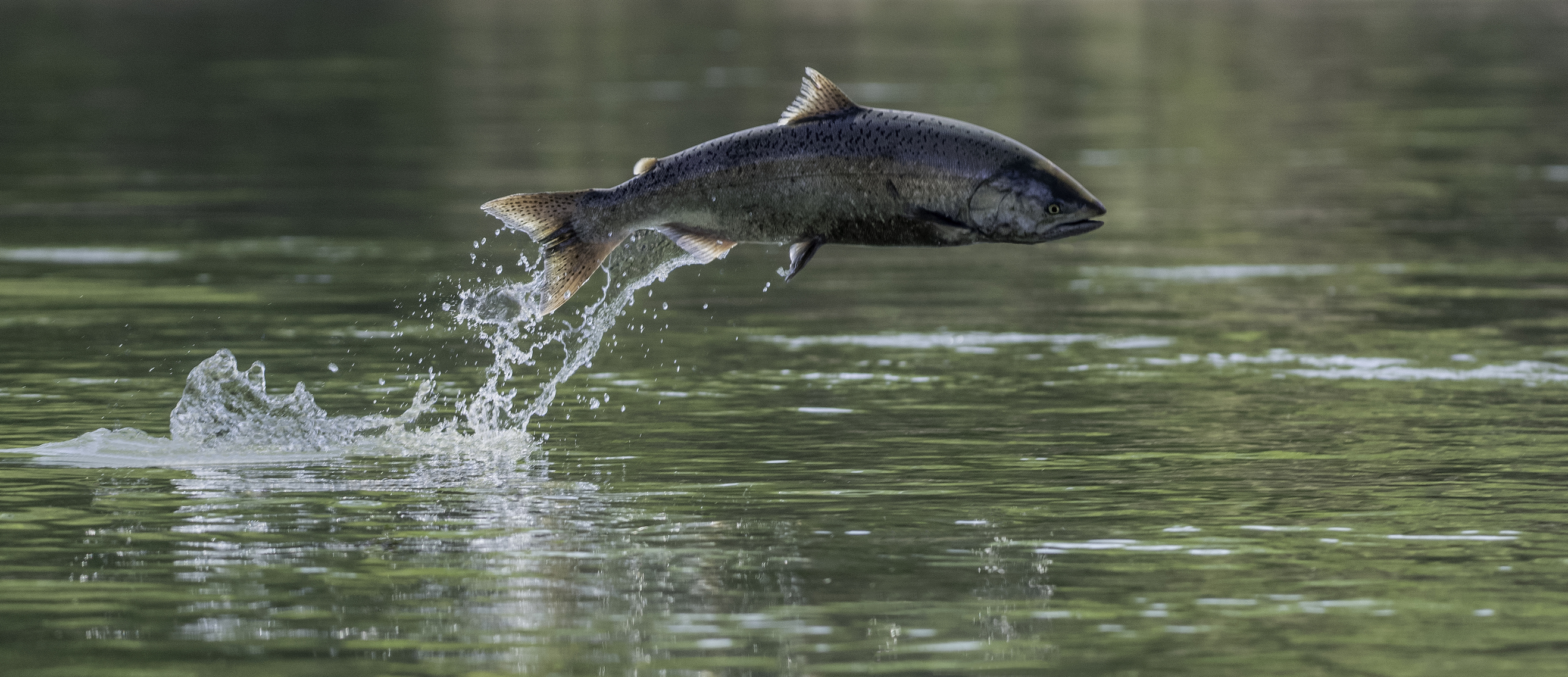The Snake River salmon runs are basically complete for the year and Chinook salmon runs increased again, for the third year in a row, reaching some of the highest levels of the past two decades.
These results directly contradict environmental activists who predicted returns of Spring/Summer wild Chinook would decline every year and be “functionally extinct” by 2025. And one early predictor of next year’s run indicates returns will be similar or even slightly better.
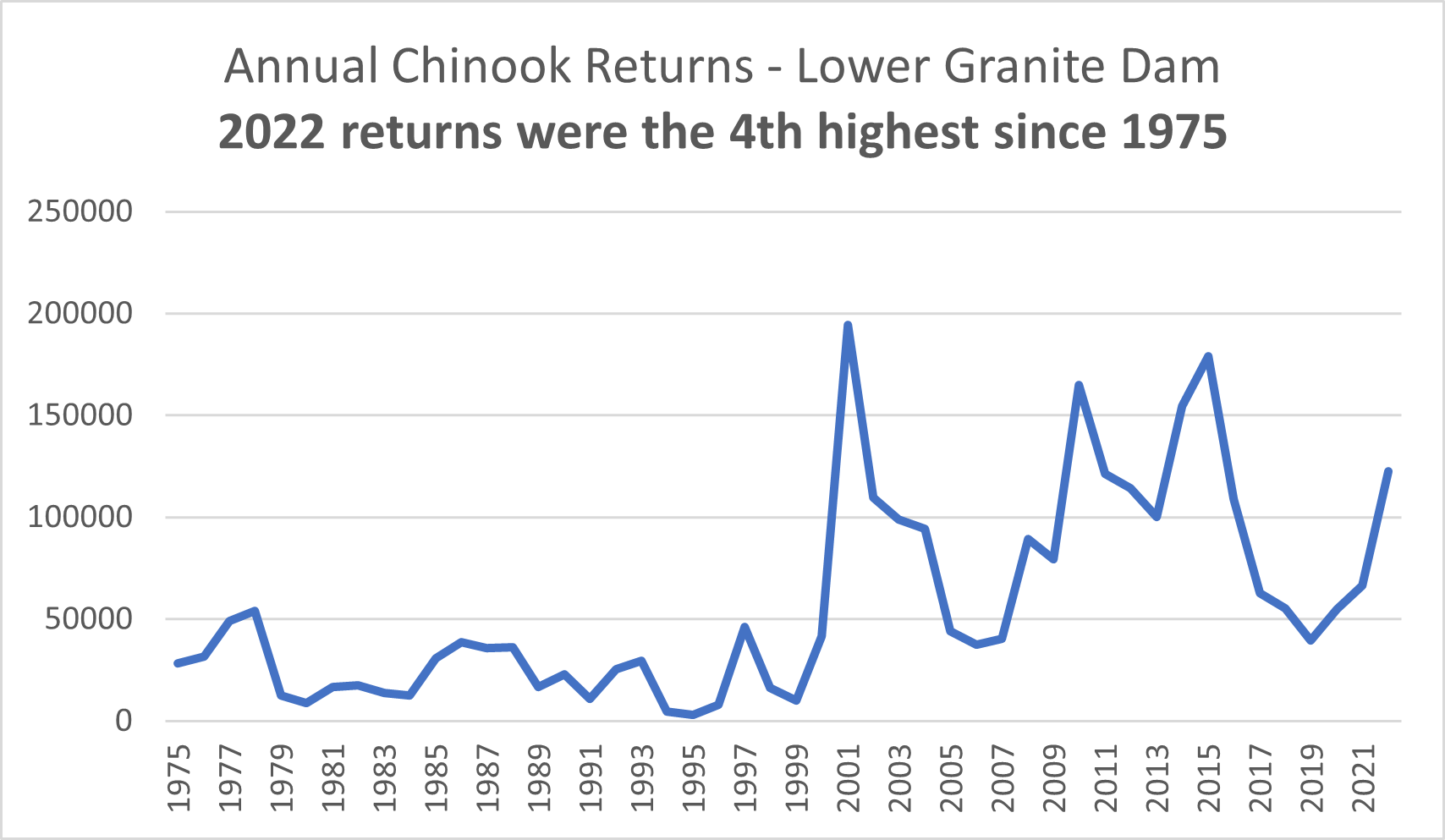 Overall, the Chinook returns at the Lower Granite Dam – the farthest upstream of the four Snake River dams – were dramatically up over last year. They finished 85 percent higher than 2021 and were the 4th highest total since 2001.
Overall, the Chinook returns at the Lower Granite Dam – the farthest upstream of the four Snake River dams – were dramatically up over last year. They finished 85 percent higher than 2021 and were the 4th highest total since 2001.
The response of some anti-dam activists is that while the totals have increased, they are still well below “historic” levels of the 1800s. This is a truly silly metric. Name a single river anywhere in the West where returns are the same as they were 150 years ago – with or without dams. It is a ridiculous goal that, if applied to Seattle, would require the destruction of the entire city to recover the Duwamish or Sammamish river runs.
Returns of both the Spring/Summer Chinook, which is the run of most concern, and the Fall Chinook, were up significantly.
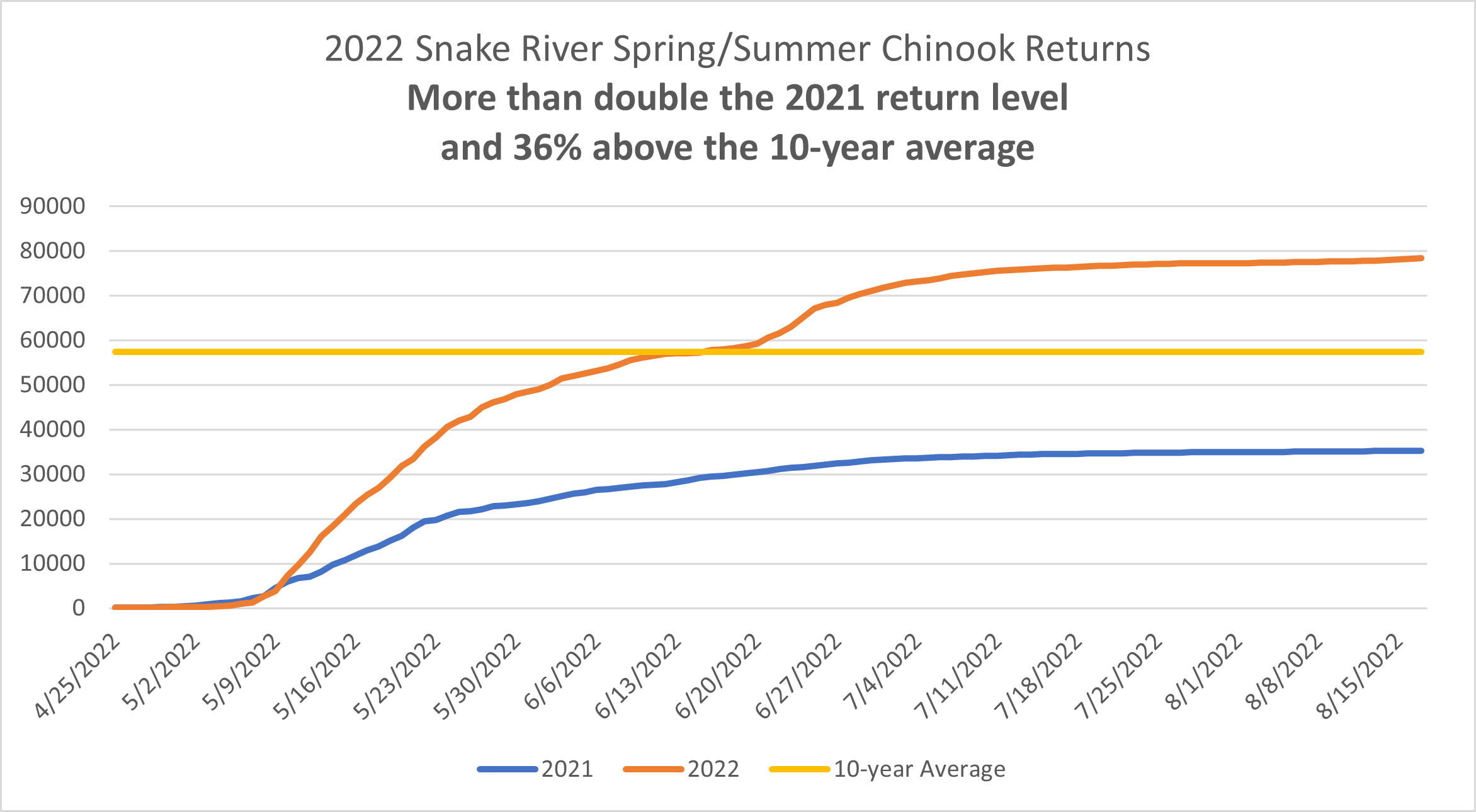 The Spring/Summer Chinook run was more than double the 2021 levels and was 36 percent above the 10-year average. This is significant because when I noted last year that the run had increased significantly over 2020, some activists responded that the levels were still below the 10-year level. That isn’t true this year.
The Spring/Summer Chinook run was more than double the 2021 levels and was 36 percent above the 10-year average. This is significant because when I noted last year that the run had increased significantly over 2020, some activists responded that the levels were still below the 10-year level. That isn’t true this year.
The Washington Environmental Council, American Rivers, and others had predicted that runs would decline in both 2021 and 2022. They were wrong both times. I offered to bet on the returns, but they avoided the bet. Two others did bet me. One person paid. The other one – a very strident anti-dam activist – demanded I increase the size of the bet significantly, but then refused to pay when he lost.
As is evident by the chart above, the runs are cyclical, with ocean conditions and other factors playing a big role in returns. We are still at the top of that cycle, but it is likely to turn down again in the next few years. The goal is to have average returns increase gradually on a 10-year average.
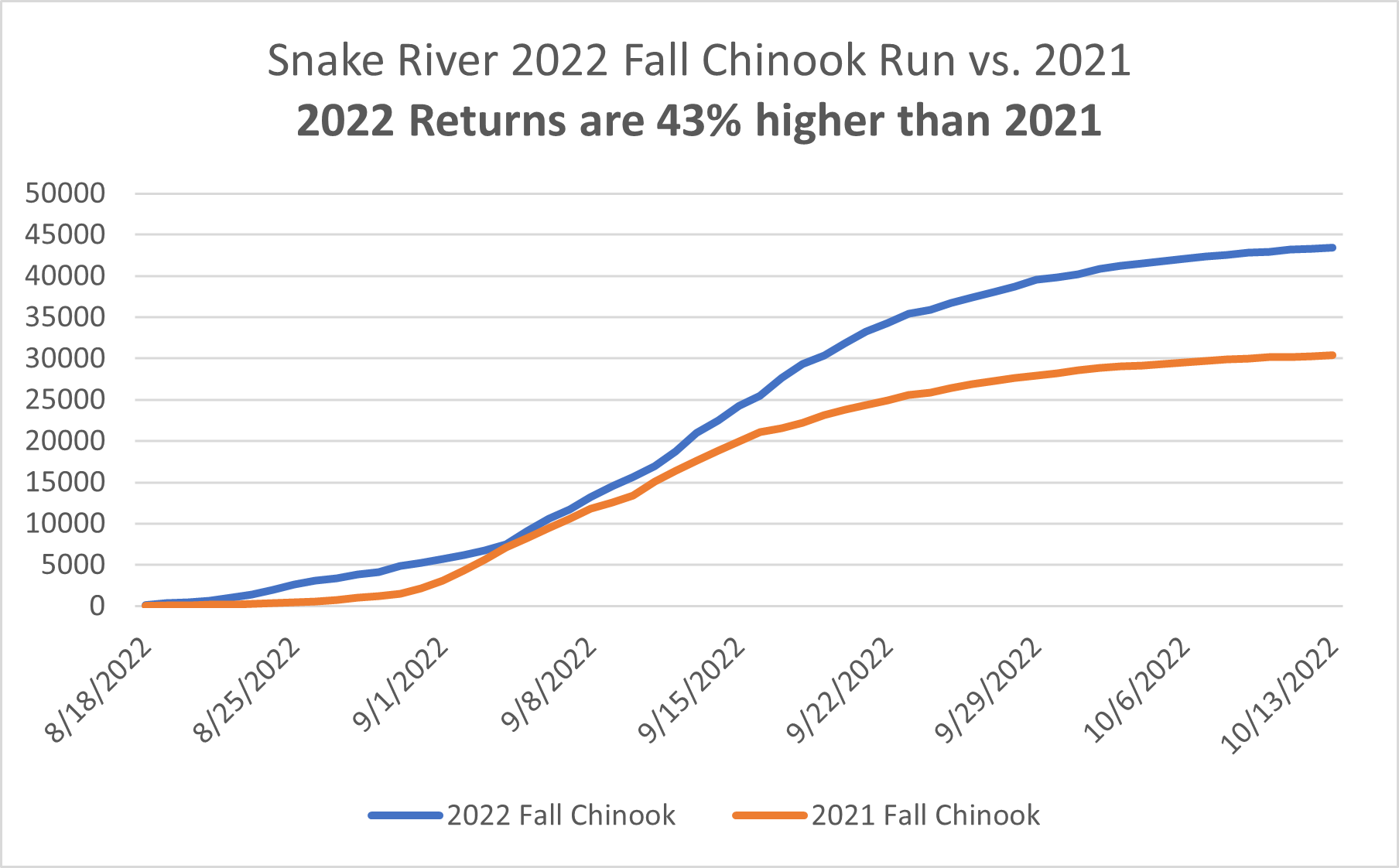 The returns of Fall Chinook were also very strong. The state of Washington considers the Fall Chinook run near recovery already. The return this year was 43 percent higher than last year, the third year they have increased, and the total was the fourth highest since 2001.
The returns of Fall Chinook were also very strong. The state of Washington considers the Fall Chinook run near recovery already. The return this year was 43 percent higher than last year, the third year they have increased, and the total was the fourth highest since 2001.
Some anti-dam activists will point to the fact that these counts include both hatchery and wild Chinook, but they argue that wild Chinook are key. I appreciate that argument, although I think it is exaggerated. Ultimately, wild Chinook returns are likely to mirror the overall trends.
Finally, there are indications that next year will be even better.
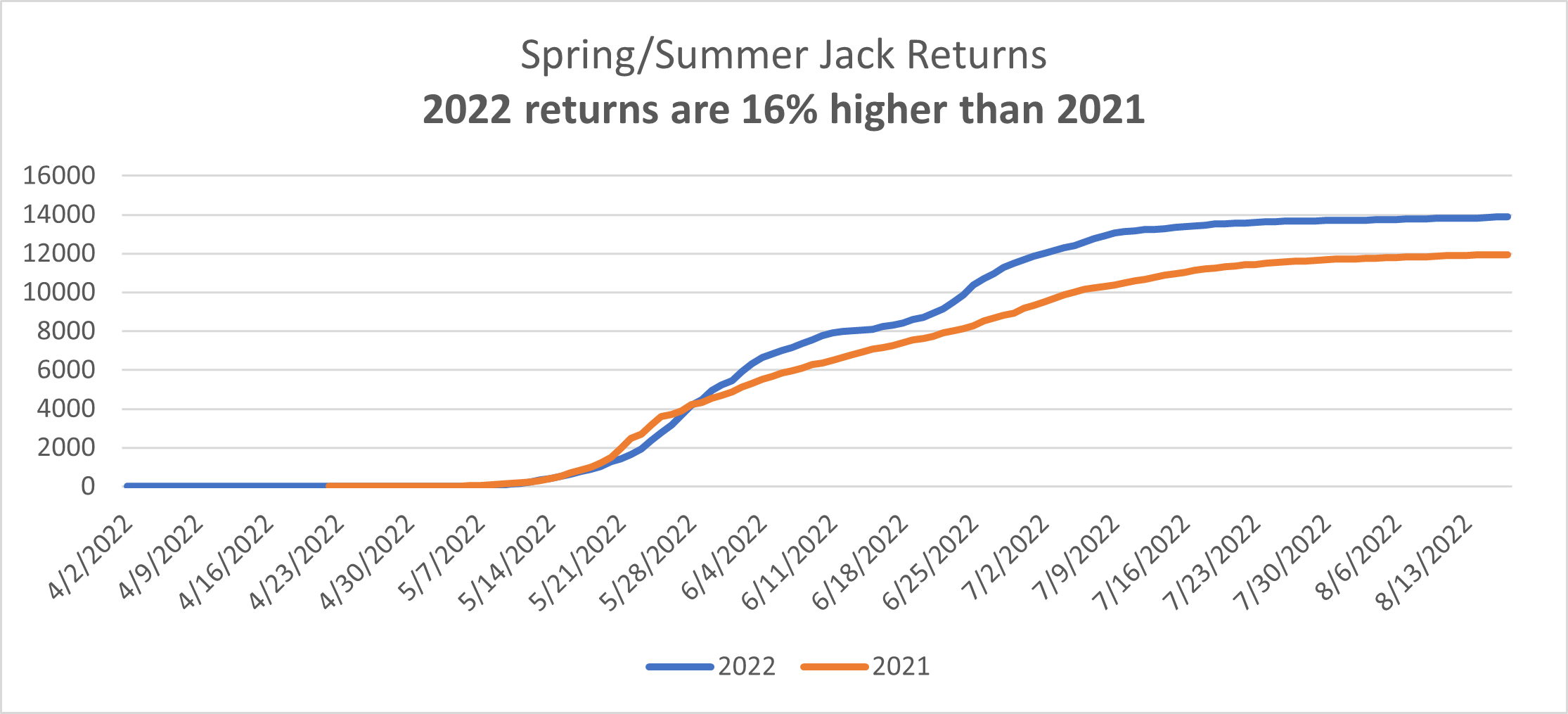 For the Spring/Summer run, the number of Jacks – Chinook that return a year early – was 16 percent higher this year than last. These returns are often an indicator of the direction of the following year’s returns. There are many other factors that influence Chinook returns, including ocean conditions and predation. But this is a good initial sign.
For the Spring/Summer run, the number of Jacks – Chinook that return a year early – was 16 percent higher this year than last. These returns are often an indicator of the direction of the following year’s returns. There are many other factors that influence Chinook returns, including ocean conditions and predation. But this is a good initial sign.
Returns for Fall Jacks weren’t as good. Fewer Jacks returned this year than last, indicating a potential decline.
There is a lot of work to be done to recover salmon on the Snake and all across the West Coast. But these numbers demonstrate how different the reality on the ground is from the claims made by those who believe destroying the Snake River dams is the only way to recover salmon on the Snake River.

